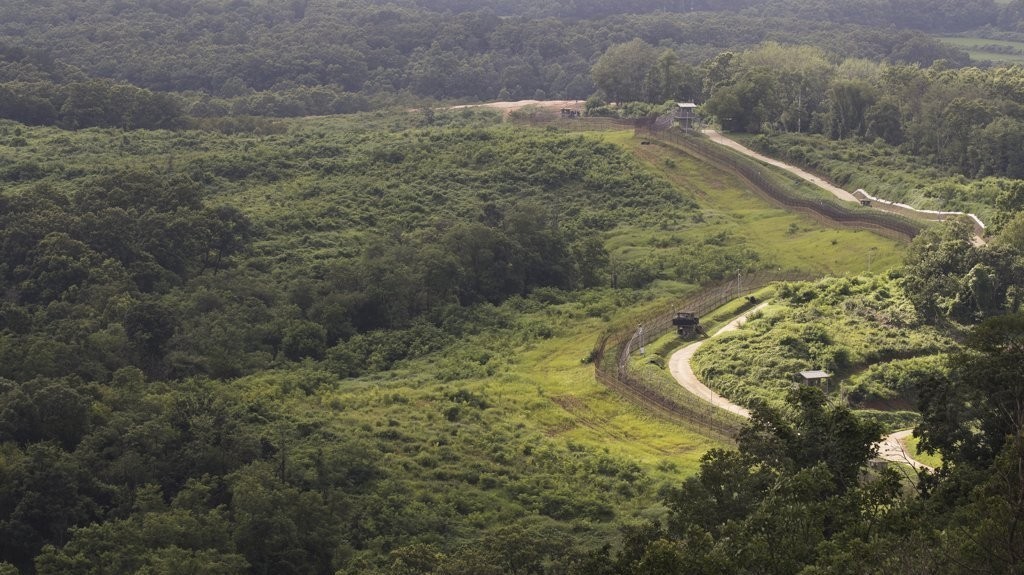Cultural Heritage Administration plans to jointly seek UNESCO listing of DMZ with North Korea
By Song Seung-hyunPublished : March 17, 2020 - 15:02

The Cultural Heritage Administration seeks to register the demilitarized zone between the two Koreas as a UNESCO World Heritage Site, together with North Korea, according to its plan for 2020 announced last week.
CHA’s DMZ plan came after President Moon Jae-in raised the issue during his 2020 New Year’s Address.
“The DMZ’s value is enormous and relates to ecology, history, peace and reconciliation between the South and the North. Jointly registering the DMZ on the list of UNESCO World Heritage is something we can start right away. I am looking forward to a positive response from North Korea,” Moon said in January.
Created in 1953, DMZ is a 248-kilometer border that divides the Korean Peninsula roughly in half. The zone is approximately 4 kilometers wide and is estimated to be 1 1/2 times the size of Seoul.
“As the president said, the DMZ is a symbolic space of the inter-Korean cold war. We aim to turn this place into a symbolic space for peace through cultural cooperation,” CHA official Lee Jong-gyu told The Korea Herald.
Around 37 points of cultural and natural heritage are thought to be located inside the DMZ, according to CHA.
“Currently, we only know the heritage sites inside the DMZ based on historic documents. We do have to go in and look into them and then suggest to North Korean officials about applying (for UNESCO listing),” Lee said.
CHA plans to submit a tentative list to UNESCO by December jointly with North Korea. Nomination to the World Heritage List is possible a year after UNESCO confirms the tentative list.
“Due to the coronavirus spread, we are unable to start a working-level meeting with North Korea immediately,” Lee said. “But we are adjusting some administrative details at the moment, such as where in the DMZ we will look into and who will go in,” he added.
In July last year, CHA signed memorandums of understanding with Gyeonggi and Gangwon provinces to cooperate on the project to apply for the UNESCO listing as the provinces border on the DMZ.
The official also added that CHA hopes for further cooperation with North Korea in the future if this project goes well.
“We know that some old documents that have high academic and conservation value exist in North Korea,” Lee said. “Also the ancient Goguryeo Kingdom tombs are in the North as well as relics from the 1919 March 1st Movement, two royal tombs from the Joseon era, natural monuments and more. There are many projects on which we can work together.”
So far, CHA has conducted two projects jointly with North Korea.
In 2007, South and North Korea started excavating the ancient palace site of Manwoldae, where the now-demolished royal palace of the Goryeo Kingdom (918-1392) once stood, located in the North Korean city of Kaesong. The two sides have been focusing on excavating the western part of Manwoldae’s central buildings that have been severely damaged.
A total of eight excavation projects undertaken jointly by the two Korea have resulted in the discovery of 40 building sites and more than 179,000 artifacts. The latest excavation took place in 2018 and lasted 50 days.
“We finished excavating around 60 to 70 percent of western parts of Manwoldae’s central building. We are planning to resume the excavation soon. When we were doing the eighth excavation project, we discussed doing the project for longer than 50 days next time,” the CHA official added.
In 2018, traditional Korean wrestling style ssireum was inscribed on the UNESCO intangible cultural heritage list.
South and North Korea had submitted their applications separately in 2016 and the UNESCO’s World Heritage Committee recommended merging the two bids.
According to the Ministry of Foreign Affairs, Seoul suggested the joint application after a historic inter-Korean summit in April 2018, to which Pyongyang responded positively. This led to ssireum becoming the first joint UNESCO bid in history by the two Koreas.
By Song Seung-hyun (ssh@heraldcorp.com)







![[KH Explains] How should Korea adjust its trade defenses against Chinese EVs?](http://res.heraldm.com/phpwas/restmb_idxmake.php?idx=644&simg=/content/image/2024/04/15/20240415050562_0.jpg&u=20240415144419)












![[Today’s K-pop] Stray Kids to return soon: report](http://res.heraldm.com/phpwas/restmb_idxmake.php?idx=642&simg=/content/image/2024/04/16/20240416050713_0.jpg&u=)